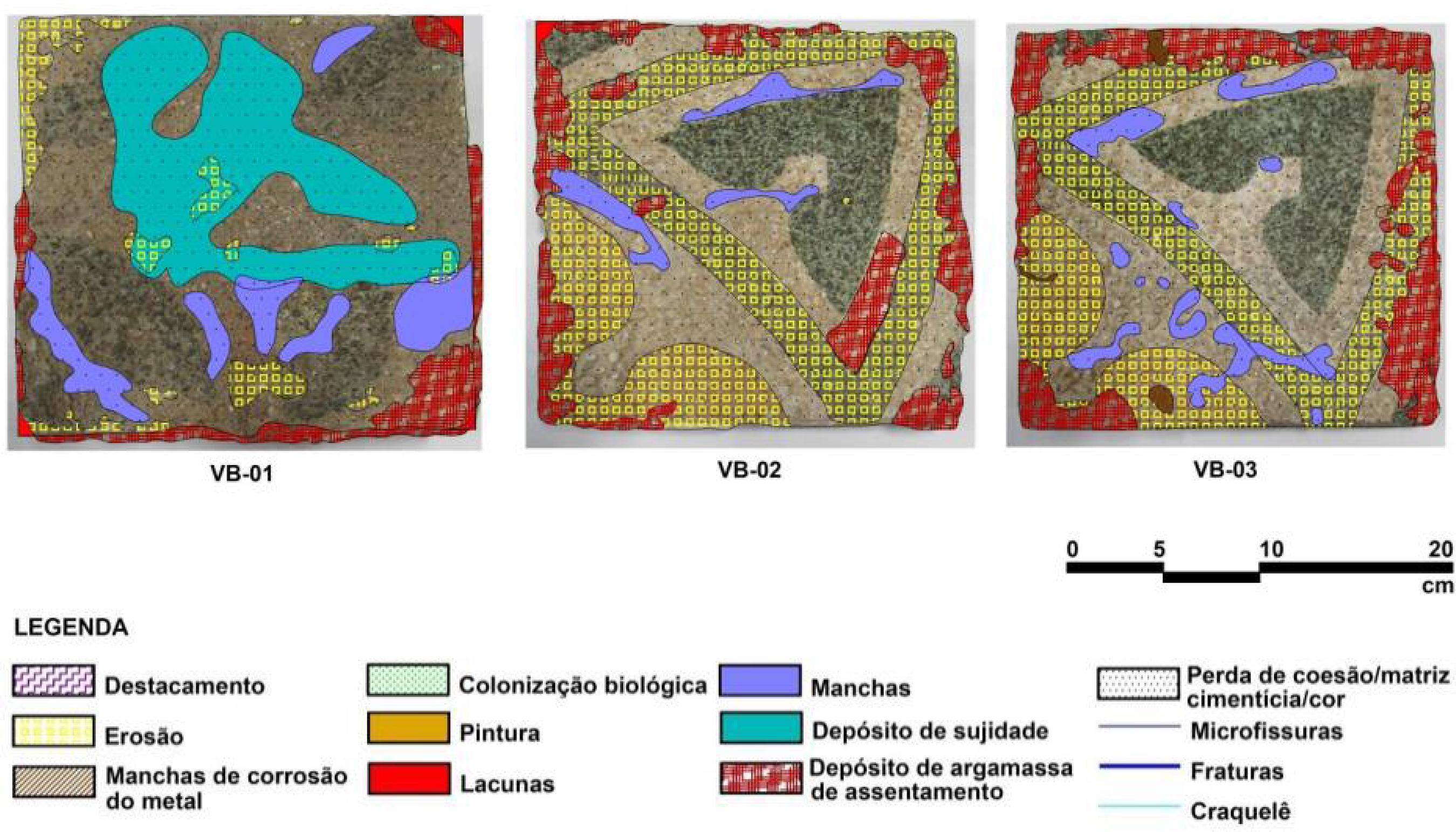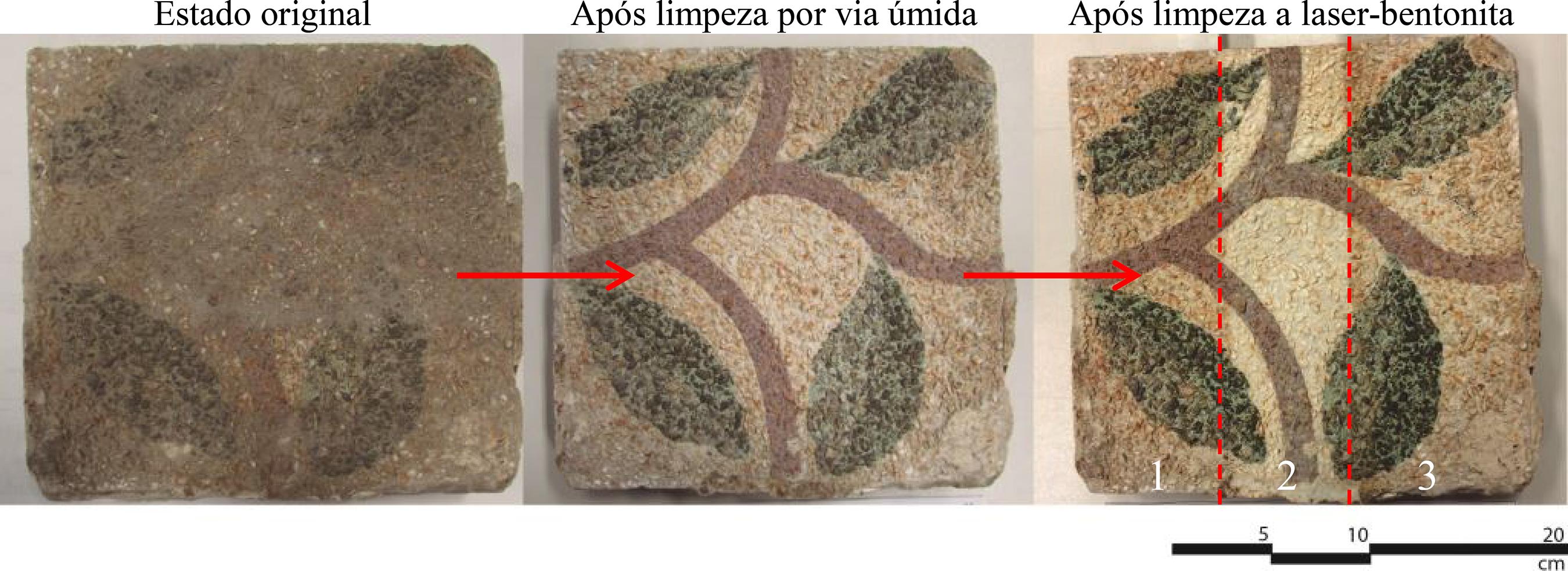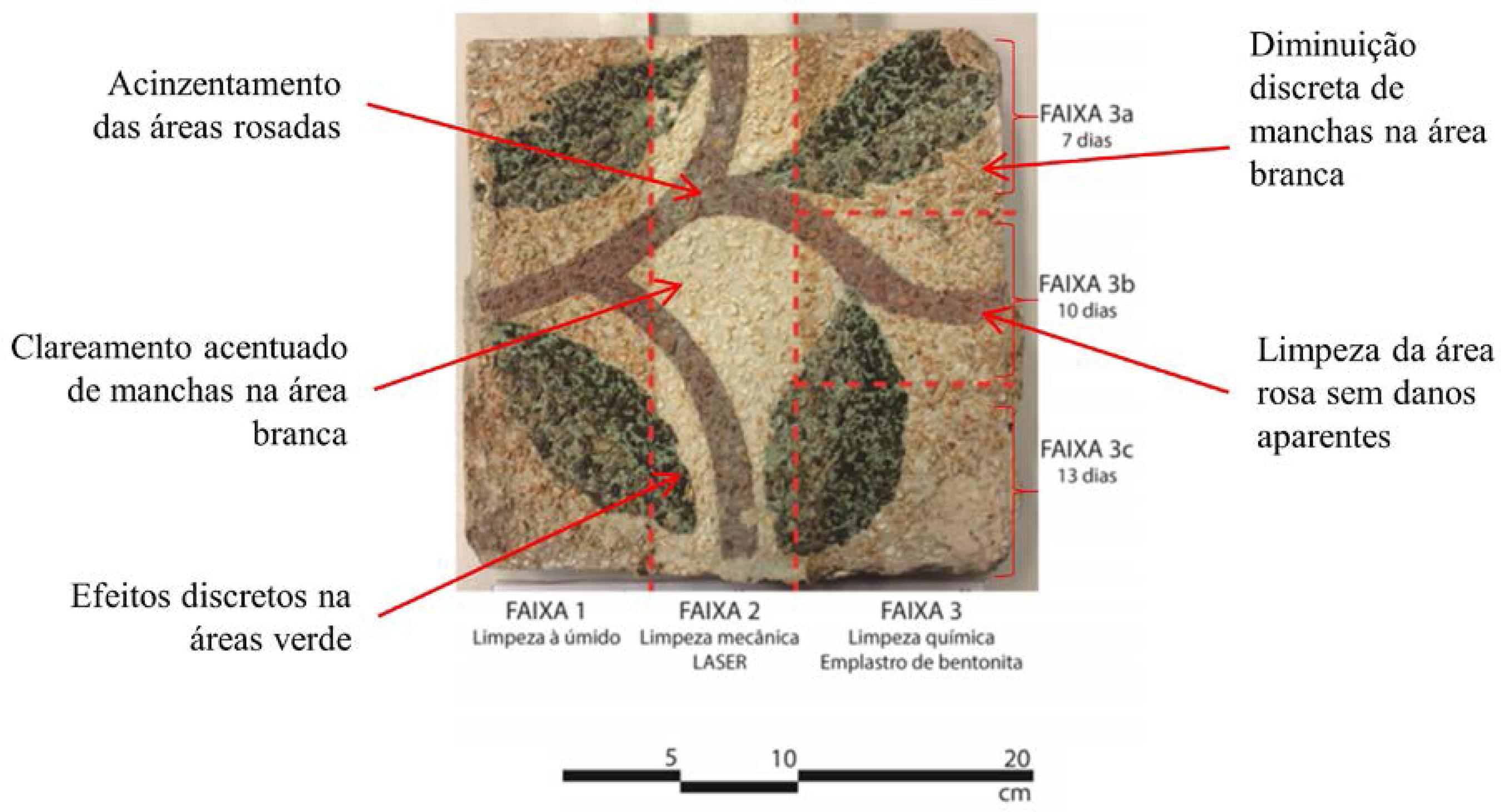Abstract
Terrazzo tiles are made of crushed mineral aggregate, cement (normal, white or pigmented) and sand. The mineral aggregate, called granitine, is responsible for the tiles' decorative appearance. The origin of its use in buildings in the city of Belem (Brazil) dates back to the start of imports of building materials during Brazilian industrialisation period. Terrazzo tiles are subject to weathering and human action, which cause several anomalies whose treatment depends on the tiles' constituents. The objective of this study is to evaluate the effectiveness of mechanical cleaning techniques using water and neutral soap, chemical bentonite patches and laser on terrazzo tile samples. After a visual analysis, the efficacy of the different methods was evaluated through brightness and colour measurements. The results showed that the laser cleaning yielded superior results, especially in the white, black and pink colours. However, the technique caused changes in the brightness of the tiles. The bentonite patch achieved satisfactory overall results, especially in the green colour, without causing changes in the brightness of the samples. This study aims to improve cleaning strategies so that, subsequently, the technique becomes feasible for other similar products, as well as for limestone and cement-based materials.
Keywords:
Cement based matrials; Conservation; Laser; Bentonite; Color; Brightness


 Fonte: Grandinetti (2015).
Fonte: Grandinetti (2015).



 Fonte:
Fonte:  Fonte: adaptada de
Fonte: adaptada de 


